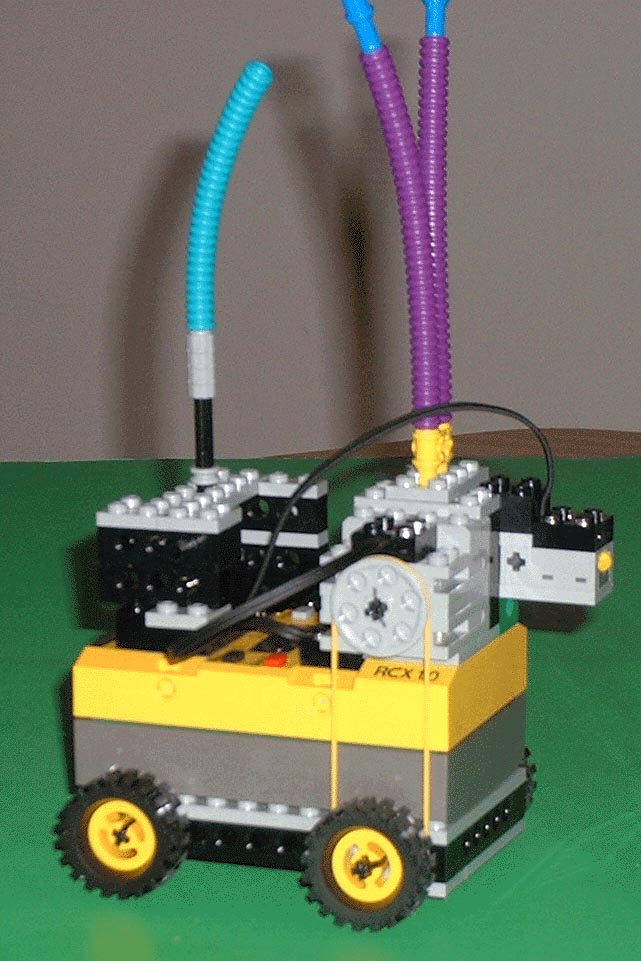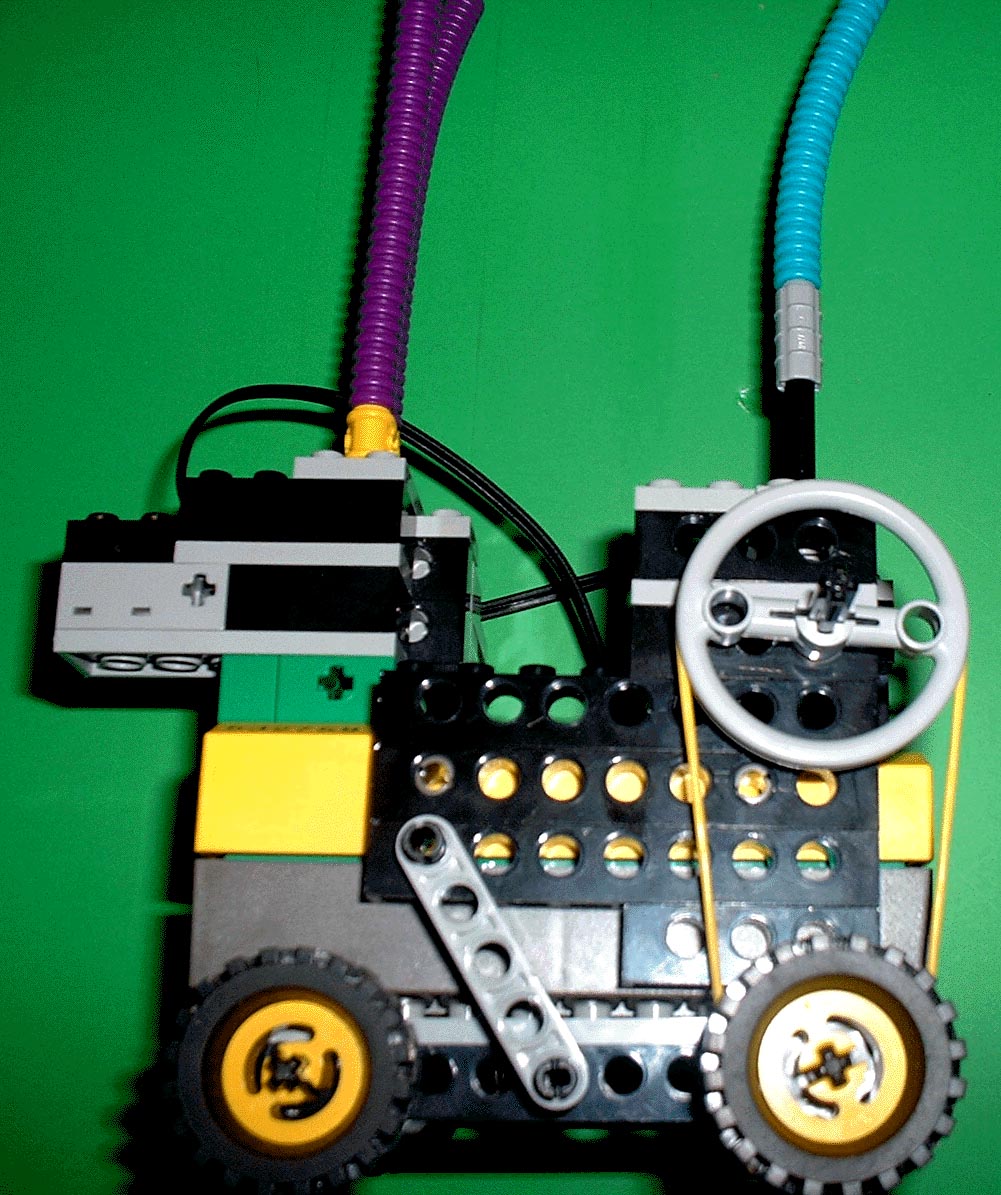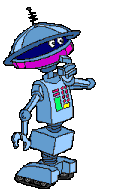Sample Student Task
Task Two Task
Three Pictures

 Task
One: Create A Fast Prototype Task
One: Create A Fast Prototype
Task:
You will create between 3-5 Prototype Vehicles.
Goal:
To create the fastest vehicle possible.
Specifications: Each
of your vehicles must have:
-
A RCX Box r
-
A stable structure connecting the RCX Box
to wheel axles. r
-
A motor and a drive system that makes the wheels
move. r
Testing:
Once you have created a prototype you must test it at the
SPEED TESTING LAB (Remember,
your prototype must be checked
with the Quality Design Supervisor
first!)
Prototype
#
|
Type of
System Used
|
Quality Supervisor
Check |
Time
in Seconds
|
| |
1 |
1
|
Trial
One
|
Trial
Two
|
Trial
Three
|
Average
Time
|
|
1
|
Small Gears |
1 |
0.006 |
0.071 |
0.08 |
0.0723 |
|
2
|
Large Gears |
|
0.08 |
0.071 |
0.074 |
0.075 |
|
3
|
With Pulleys |
|
0.015 |
0.118 |
0.1 |
0.1076 |
|
4(Optional)
|
1 |
|
|
|
|
|
|
5(Optional)
|
1 |
|
|
|
|
|
Testing Observations:
1. Which drive system went the
fastest? Why?
The pulleys. We think it
is because they can grip better, since the gears kept coming apart and
missing.
2. Which was the easiest to build?
Why?
The pulleys. We didn't have
to connect a bunch of gears, and they were hard to space apart properly.
3. Which was the hardest to build?
Why?
The gears. Because they were
hard to put on together, they would miss each others' teeth.
4. Which one would you recommend
to other engineers?
The pulleys. But, sometimes
they would snap. So gear maybe are stronger if you can figure them
out!

 Task Two:
Make your Vehicle do Something Else
(Back
to Top) Task Two:
Make your Vehicle do Something Else
(Back
to Top)
Task:
Using the design from your FASTEST prototype, design another
feature on your car.
Goal: To
make a creative, interesting and functional design.
Specifications: Your
car must (choose a task):
Basic Task:
-
Make something else move besides
the wheels using a mini-motor.
-
Have a purpose, do something that
a consumer would find important.
-
Have a good design style (hey, would
you buy an ugly car?)
Supreme Task:
-
Make something else move besides
the wheels using turning power from the one motor.
-
Have a purpose, do something that
a consumer would find important.
-
Have a good design style with lots
of features including flashing lights, music, and interesting programming
features.
Brainstorming Ideas:
-
A car that can pick up things.
-
Maybe it can have a T.V.
-
What if it could float?
|
Sketch Board:

 Task Three:
Safety (Back
to Top) Task Three:
Safety (Back
to Top)
Task:
Add a sensor (light of touch sensor), onto your vehicle which will prevent
it from bumping into things.
Goals:
To create a very safe vehicle.
Specifications:
You must:
-
Use either a light sensor or a touch
sensor
-
Program your sensor to react to
wall and other objects.
Steps:
1. Discuss and decide with your
group, which sensor would work best and how will it be attached.
2. Build sensor into vehicle
design. (Is it structural strong? Is it connected properly?)
| |
 Check
with your Quality Supervisor before going to the programming lab. Check
with your Quality Supervisor before going to the programming lab.
|
|
3. Write a program that will prevent
your vehicle from crashing. (Check to make sure you attach a port modifier
to your sensor icon!)
4. Download your program into
your RCX box, and test it.
5. Re-design and re-program your
vehicle if there are any bugs.
6. Print your program and attach
it to this sheet. Also save a copy for your proposal.
| |
 Check
with your Quality Supervisor before going to the programming lab. Check
with your Quality Supervisor before going to the programming lab.
|
|
Reflections:
Our
program was tricky at first, because we did not know how to use the sensor
part. But Ms. Robertson figured it out with us. Now our vehicle can drive
back and front, and if it touches a wall, it will go backwards! It was
hard at first, but the programming is pretty easy.

 Sample
Student Pictures (Back
to Top) Sample
Student Pictures (Back
to Top)


 Back
to Top Back
to Top
|




 Task Two:
Make your Vehicle do Something Else
Task Two:
Make your Vehicle do Something Else